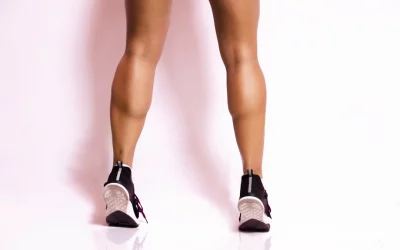Ever feel that nagging tightness in your arms after a workout or a long day of lifting and typing? Yep, we’ve all been there. Your biceps do a lot more than you might give them credit for—from carrying groceries to flexing at the gym, they’re constantly in action. But when was the last time you showed them some stretching love?
Good news: stretching your biceps is easier than you think, and it can make a world of difference in how your arms feel and perform. In this article, we’ll walk you through some fantastic bicep stretches suitable for everyone, whether you’re a fitness newbie or a seasoned athlete. From the simple Wall Stretch to the revitalizing Reverse Tabletop, we’ve got you covered.
What Are the Benefits of Stretching Your Biceps?
Your biceps are key players in almost every upper-body movement, whether you’re lifting weights, carrying groceries, or typing away at your desk. But when tightness builds up, it can lead to discomfort, reduced mobility, and even poor posture. That’s where bicep stretching becomes a game-changer.
Regular bicep stretches help improve flexibility, making it easier for your arms to move freely and comfortably. By releasing muscle tightness, you can reduce arm pain and even enhance your posture, giving your upper body better balance and alignment.
For fitness enthusiasts, stretching also boosts performance in strength-based activities by ensuring your muscles are limber and ready to work.
And let’s not forget injury prevention—consistent stretching helps keep your biceps healthy, reducing the risk of strains and supporting faster recovery after intense workouts.
“After I added bicep stretches to my routine, I noticed fewer aches after workouts. My arms feel stronger, more flexible, and ready to take on anything!”
Effective Bicep Stretch Techniques for All Fitness Levels
 Wall Stretch
Wall Stretch
The Wall Stretch is a simple yet effective way to target the biceps and shoulders, making it ideal for relieving arm tension and improving flexibility. This stretch is perfect for beginners and advanced fitness enthusiasts alike.
This stretch is especially beneficial as it helps:
-
Elongate the biceps, easing tightness.
-
Relieve tension in the shoulders and upper arms.
-
Enhance flexibility, promoting better upper body movement.
To perform the Wall Stretch, follow these steps:
-
Stand facing a wall, arm extended out to the side at shoulder height, with your palm flat against the surface.
-
Slowly turn your body away from the wall until you feel a gentle stretch in your biceps.
-
Hold for up to 30 seconds, then switch arms.
Doorway Stretch
The Doorway Stretch targets the biceps and chest, making it a fantastic choice for improving arm mobility while also opening up the chest. It’s great for reducing stiffness and preparing for upper-body workouts.
This stretch is especially beneficial as it helps:
-
Promote flexibility in the biceps and chest.
-
Relieve tightness caused by poor posture or heavy lifting.
-
Support better range of motion for upper-body exercises.
To perform the Doorway Stretch, follow these steps:
-
Stand in a doorway and place your hands on the door frame slightly below shoulder height.
-
Gently step forward until you feel a stretch across your chest and biceps.
-
Hold for up to 30 seconds, keeping your movements controlled.
Overhead Bicep Stretch
The Overhead Bicep Stretch is a classic technique to elongate the biceps and shoulders, helping to reduce tightness and improve flexibility in the upper body.
This stretch is especially beneficial as it helps:
-
Loosen tight biceps after strength training.
-
Improve arm mobility for smoother movements.
-
Relieve tension in the upper body.
To perform the Overhead Bicep Stretch, follow these steps:
-
Raise one arm overhead and bend your elbow so your hand reaches down toward your back.
-
Use your opposite hand to gently push your elbow downward for a deeper stretch.
-
Hold for up to 30 seconds, then switch arms.
Seated Bicep Stretch
The Seated Bicep Stretch offers a deep, controlled stretch that targets both the biceps and shoulders. It’s ideal for relaxing sore muscles and supporting better posture.
This stretch is especially beneficial as it helps:
-
Provide a deep release for sore biceps.
-
Improve flexibility and support good posture.
-
Enhance upper arm mobility.
To perform the Seated Bicep Stretch, follow these steps:
-
Sit on the floor with your hands placed behind you, fingers pointing away from your body.
-
Slowly slide your hands back until you feel a stretch in your biceps and shoulders.
-
Hold for up to 30 seconds, keeping your chest lifted.
Reverse Tabletop Stretch
The Reverse Tabletop Stretch is a dynamic pose that targets the biceps, shoulders, and chest, improving strength and flexibility in the upper body.
This stretch is especially beneficial as it helps:
-
Strengthen and stretch the biceps and shoulders.
-
Improve upper-body flexibility and stability.
-
Relieve tension after workouts.
To perform the Reverse Tabletop Stretch, follow these steps:
-
Sit on the floor with your knees bent and feet flat, placing your hands behind you with your fingers pointing forward.
-
Press into your hands and feet to lift your hips, forming a table shape.
-
Hold for up to 30 seconds, lowering back down with control.
Adding these bicep stretches to your routine can improve flexibility, relieve soreness, and enhance overall arm mobility. Want tailored guidance? Try WeStretch, where virtual coaches Ada and Bruce design personalized stretching plans for all fitness levels.
How to Add Bicep Stretches to Your Fitness Routine
Building a consistent routine for bicep stretches is an easy yet effective way to improve flexibility and reduce soreness. Incorporating these stretches into your day doesn’t need to be complicated—it can seamlessly fit into your pre-workout, post-workout, or even downtime habits. Here’s how to make bicep stretching a regular part of your routine.
Before exercising, use dynamic movements like the Doorway Stretch to activate your arms and prepare for strength-based activities. After your workout, cool down with static holds like the Overhead Bicep Stretch to relieve tension and support recovery. Even on rest days, gentle stretches like the Wall Stretch can help maintain mobility and prevent tightness.
To stay consistent, aim for 10–15 minutes a day, pairing stretches with deep, mindful breaths to enhance relaxation and effectiveness. For extra guidance, explore WeStretch’s tailored programs designed to keep you on track and motivated. With a simple habit, you’ll enjoy lasting flexibility, reduced pain, and better arm mobility every day.
Exercise Smarter with WeStretch: Your All-in-One Stretching Assistant
A consistent full-body stretching routine is essential for improving flexibility, supporting injury prevention, and enhancing overall well-being. Carefully following simple yet effective stretches targeting the hamstrings, hip flexors, back, quads, chest, and shoulders, individuals of any fitness level can reap the benefits.
Regular stretching, with attention to proper form and consistency, can help you move more freely, recover faster, and feel better in everyday activities.
Looking for a way to add some fun to your stretching routine? Check out WeStretch—an app that’s like your own personal stretch coach! With tailored plans, easy-to-follow demos, and progress tracking, it’s got everything you need to keep you limber and on point. Ready to get flexible? Sign up today and let’s get stretching!
FAQ
What is the best time to stretch your biceps?
The best time to stretch your biceps is before and after your workouts. Pre-workout stretches like dynamic movements help prepare your muscles for activity, while post-workout static stretches aid recovery and relieve tension. Stretching on rest days can also improve flexibility and reduce tightness, keeping your biceps limber and ready for action.
Can bicep stretches prevent injuries?
Yes, regular bicep stretching helps prevent injuries by improving flexibility and reducing muscle tightness. Stretching supports better range of motion and reduces the risk of strains or tears during strength training or daily activities. Combined with proper warm-ups and technique, stretching is an effective way to maintain healthy, injury-free biceps.
How often should I stretch my biceps?
For optimal results, aim to stretch your biceps at least 3–5 times a week. Incorporate stretches into your workout routine or dedicate 10–15 minutes on rest days. Regular stretching improves flexibility, relieves tightness, and supports muscle recovery, helping you maintain healthy and mobile biceps over time.
Are bicep stretches suitable for beginners?
Absolutely! Bicep stretches are suitable for all fitness levels, including beginners. Simple exercises like the Wall Stretch or Seated Bicep Stretch are easy to perform and help gently improve flexibility. Start with light stretches, avoid overextending, and gradually increase intensity as your flexibility improves for safe and effective results.
Can bicep stretches help with post-workout soreness?
Yes, stretching your biceps after a workout can reduce post-exercise soreness by increasing blood flow and promoting muscle recovery. Stretches like the Overhead Bicep Stretch release tension, improve mobility, and help flush out lactic acid buildup, leaving your arms feeling more relaxed and less stiff after exercise.






